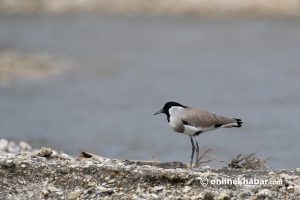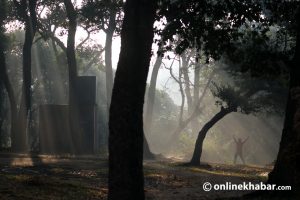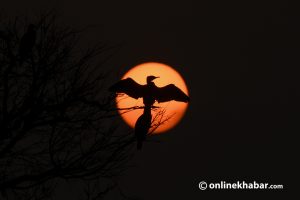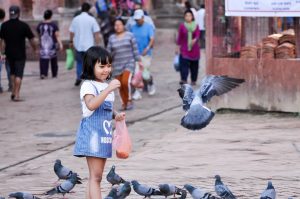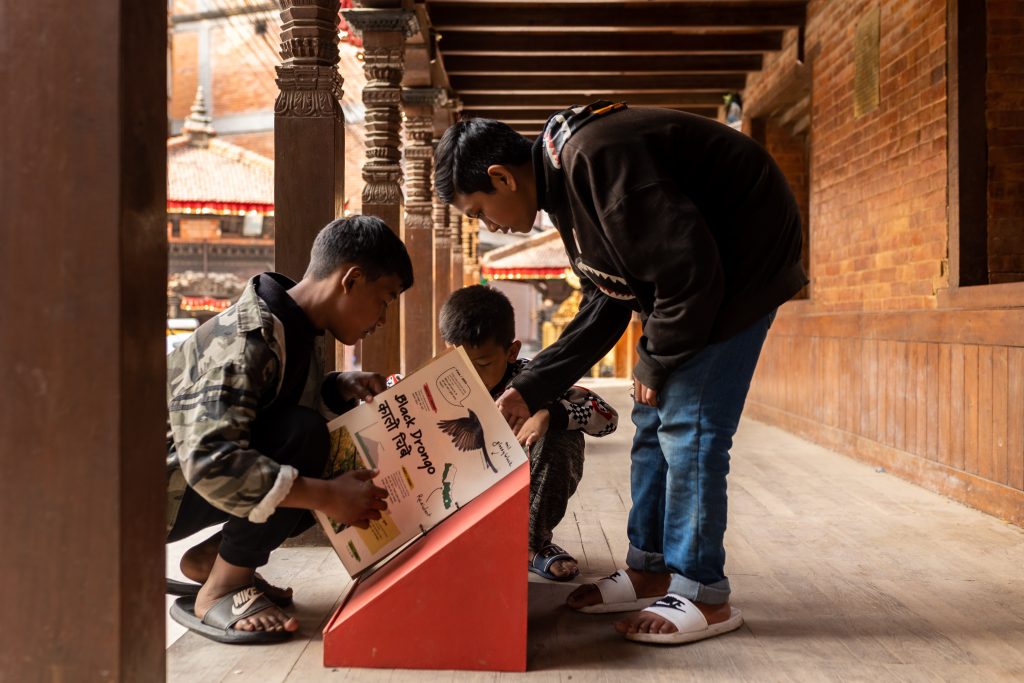
After the cold and harsh shishir (winter) season of the year is over, a barn swallow comes to chirp and build a nest in my house–to announce the arrival of spring. Sometimes more than one arrives. The birds come every spring on Basanta Panchami, a festival that marks the start of spring.
My mother told me this story when I was a kid about a chirping bird that appeared on her window right on the day that welcomes the start of spring. Of course, it could not have been the same barn swallow year after year. But a bird came every start of spring and she made a note of it for many years, she told me.
Today, she does not sit by the window waiting for the bird to arrive. We no longer need the chirping of birds in Kathmandu to know the changing seasons. They have been replaced by various apps on smartphones. But we still need these birds; we will always need them. We will always need nature, for nature is a prerequisite for our survival and the survival of many other beings we share the world with.
But as we build our lives around concrete buildings and digital devices, we have drawn boundaries between what constitutes nature and what does not. Living in a city, with concrete engulfing us on all sides, we might think we are far away from nature, but that is often not true. We need nature to exist, the context we need to survive. And in that sense, nature is always around us.
My thoughts about birds in Kathmandu were reinforced during a recent exhibition–titled Chhimeki Chara (birds as neighbours)–as a part of the fifth edition of Photo Kathmandu, an international photo festival that takes place in Kathmandu every two years.
The Chhimeki Chara campaign

Chhimeki Chara, a campaign initiated by the Nepali birding community and coordinated by Bird Conservation Nepal, explores similar notions. It hopes to encourage people to look beyond the concrete and be more aware of the natural world around us, in an attempt to increase awareness and interest among people in learning and caring about the birds in Kathmandu. As the title of the event suggests, birds are our neighbours, sharing the environment — our shared home. This campaign’s idea was to make people notice the natural world around us all, with a particular focus on birds in Kathmandu.
Writing a piece for The Guardian on art curation, Swiss art curator Hans Ulrich Obrist writes, “Exhibitions need not only take place in galleries, need not only involve displaying objects. Art can appear where we expect it least.” And this is what Photo Kathmandu rightly captures every time it takes on the streets of Kathmandu, especially Patan. During the entirety of the photo festival, from February 25 to March 31 this tear, the neighbourhood in Chyasal Hiti, Lalitpur, had been turned into a small bird library of sorts with life-sized books on display as part of the Chhimeki Chara exhibition.
Right from the start of the exhibition in late February, pictures of the Chhimeki Chara exhibits have made multiple rounds on social media, thanks to its interactive design. Each life-size book covers birds in Kathmandu as well as in the neighbourhoods of different parts of Nepal. The exhibit book included information on neighbourhood birds like habitat, size, resident location, the voice of the bird, and advice on how to spot the particular bird around us.
A total of 13 exhibiting artists participated in the Chhimeki Chara exhibition. They were Abhishek Maharjan, Babin Tandukar, Kumud Parajuli, Kushal Raj Pandey, Nikita Shrestha Shakya, Om Prakash Yadav, Prasiit Sthapit, Rabindra Man Tamrakar, Roshan Manandhar, Sadip Dangol, Shatruhan Kumar Ray (Pandey), Sunil Manandhar, and THC Photography Nepal. Continuing the bird theme in the same location is Indian artist Esha Munshi’s exhibition Feather Library — a work based on feather samples collected from dead birds found in and around Ahmedabad and other parts of Gujarat. Close by was another artist Sriram Murali’s exhibition titled Minmini — a series of photos and videos documenting fireflies that light up a Tiger reserve in India.
The Chhimeki Chara campaign also has an interactive app with the same name that helps spot and locate birds around us, in particular birds in Kathmandu. The app was used in a bird counting activity in February 2023, the first bird counting through an app in Nepal. After downloading, the app prompts to add in the user’s current location. The app then shows a list of birds sighted around the chosen location. The user can also enter the number of birds sighted. There is also a bird search function where one can enter details like colour, size, etc of the bird, and the app suggests which species it might be. The app has a set of 100 species occurring in the human environment.
Reason to find time to marvel at nature

For this edition, as a part of the Chhimeki Chara exhibition, there were many bird cutouts pasted in and around Patan. The black and white cutouts of birds mingle well with the surroundings, but the colour pop in the background makes it a sight impossible to miss. This perhaps is one of the many messages of the exhibition — that these birds in Kathmandu are easily missed because they are such a close part of our everyday lives, but they must not be forgotten.
Watching neighbourhood birds in Kathmandu is something I personally like indulging in from time to time as well. I remember the first time I noticed a unique bird fly past me: it was black, tiny, and had yellow streaks in its feathers. I do not know its name still, but when I noticed the bird, I experienced a joy I had never felt before.
Since then, I have taken time to consciously see and listen to the natural world around me. One time, I noticed a sparrow, almost the size of a small leaf, resting on a leaf branch. I do not think I could fully comprehend the lightness of the sparrow and how a small leaf branch could hold the sparrow, but the sight left me truly marvelling at nature.
If we close our eyes for only just a few moments and focus on the environment around us, cutting through the noise of the concrete city, the sounds of the birds in Kathmandu will reach us. There is a cuckoo in my neighbourhood whose sound is a piece of familiar music. Every time I hear them sing, I am reminded that they are as much a part of the world as we are. And some of them are closer to us than we realise.
And the Chhimeki Chara exhibition, in many ways, made me see just that. And it gave me more reasons to find time to marvel at nature, especially the birds in Kathmandu around us.




